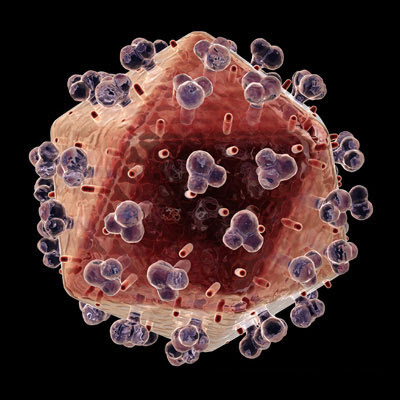
Keevil, a microbiology researcher on the University of Southampton (U.K.), has studied the antimicrobial effects of copper for more than twenty years. He has watched in his laboratory as the simple metal slew one unhealthy bug after another. He began with the bacteria that causes Legionnaire’s Disease and then turned to drug-resistant killer infections like Methicillin-resistant Staphylococcus aureus (MRSA). He examined viruses that brought on worldwide well being scares corresponding to Middle East Respiratory Syndrome (MERS) and the Swine Flu (H1N1) pandemic of 2009.
https://www.epsa-online.org/wp-content/languages/new/amoxicillin.html
Viruses with plenty of genetic flexibility, and notably people who encode their genomes as RNA somewhat than DNA, are nicely-suited to crossing the species divide.

“The ‘genes’ that may respond to environmental triggers or poisonous pathogens are the dark side of the genome,” Perron says. Retroviruses, together with HIV, are identified to be awakened by inflammation—presumably the results of infection, cigarette smoke, or pollutants in drinking water. “It’s an incredible source of interplay with the setting.
https://www.epsa-online.org/wp-content/languages/new/lipitor.html
” Those interactions may set off illness in ways in which we are only simply beginning to think about. One sensible utility of the phylogenetic network is to reconstruct infection paths where they’re unknown and pose a public health risk. The following circumstances the place the an infection historical past is well documented may function illustrations (SI Appendix).
What happens when viruses are discovered
These viruses are additionally recognized asretroviruses as a result of their RNA genome directs the formation of a DNA molecule. The DNA molecule in the end acts because the template for synthesis of viral mRNA (Figure 6-22). Initially, a viral enzyme called reverse transcriptase copies the viral RNA genome into a single minus strand of DNA; the identical enzyme then catalyzes synthesis of a complementary plus strand. (This complex response is detailed in Chapter 9.) The ensuing dsDNA is integrated into the chromosomal DNA of the contaminated cell.
Infection by human T-lymphotropic virus can lead to tropical spastic paraparesis and adult T-cell leukaemia. Human papillomaviruses are a longtime reason for cancers of cervix, pores and skin, anus, and penis. Merkel cell polyomavirus closely associated to SV40 and mouse polyomaviruses which were used as animal models for cancer viruses for over 50 years.
https://www.epsa-online.org/wp-content/languages/new/fluoxetine.html
- Some viruses are designed specifically to destroy a file or utility’s data.
- It just isn’t really helpful that you simply give delivery in a birthing pool in hospital when you have suspected or confirmed coronavirus, as the virus can generally be found in faeces.
- Within the nucleocapsid of rabies virions are viral enzymes for synthesizing viral mRNA and replicating the viral genome.
- Like different types of malware, a virus is deployed by attackers to damage or take control of a computer.
So far, the vast majority of coronavirus infections have stricken adults. Still, as a mother or father, you can’t assist however fear in regards to the safety of your children. Many mother and father are additionally looking for a balance between answering their children’s questions concerning the pandemic and implementing well being-promoting behaviors and social distancing rules with out creating an atmosphere of anxiety.
Germs: Bacteria, Viruses, Fungi, and Protozoa

The development of cancer is decided by a wide range of elements such as host immunity and mutations in the host. Viruses accepted to cause human cancers embody some genotypes of human papillomavirus, hepatitis B virus, hepatitis C virus, Epstein–Barr virus, Kaposi’s sarcoma-related herpesvirus and human T-lymphotropic virus.
Compared to viruses and cells that depend on DNA, RNA viruses tend to be sloppy when copying over their genetic code, introducing mutations at a excessive fee. This error-susceptible course of creates an immense amount of variety into populations of RNA viruses, permitting them to adapt to new environments—together with new host species—at a fast tempo, says Sarah Zohdy, a illness ecologist at Auburn University.
